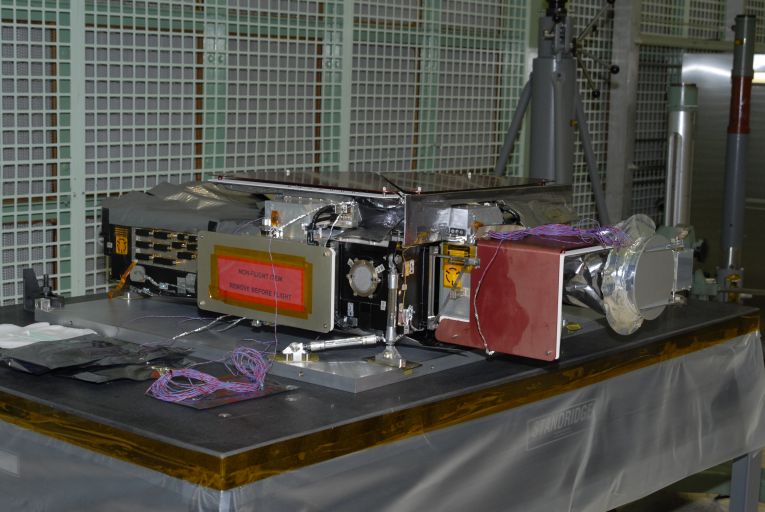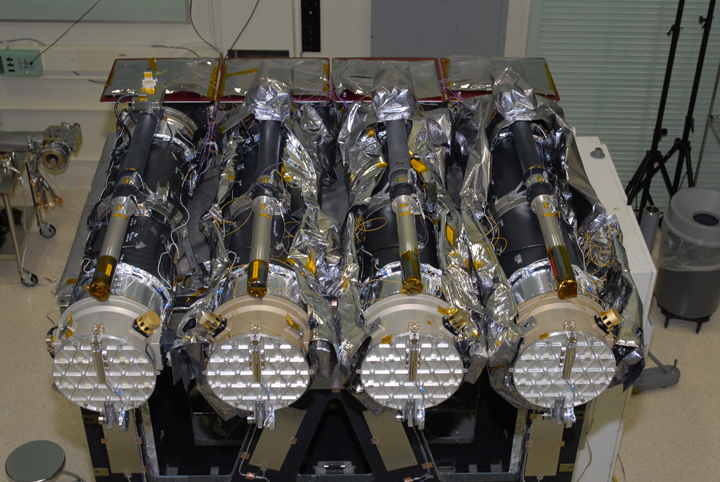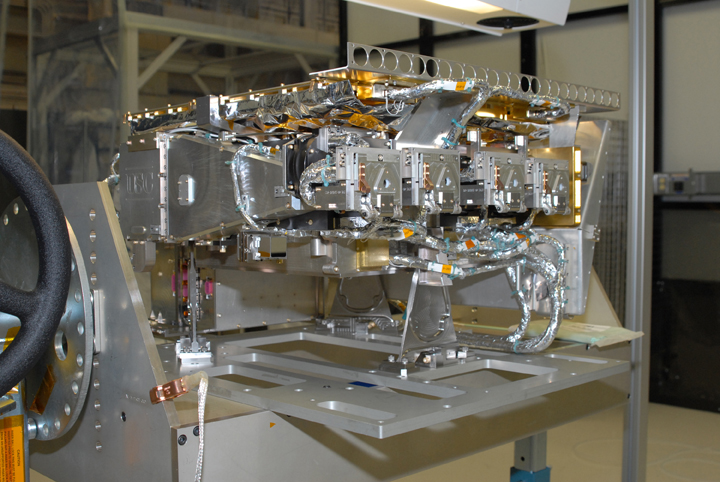SDO Instruments
SDO contains a suite of instruments that provide observations that will lead to a more complete understanding of the solar dynamics that drive variability in the Earth's environment. This set of instruments does the following:
- Measure the extreme ultraviolet spectral irradiance of the Sun at a rapid cadence
- Measure the Doppler shifts due to oscillation velocities over the entire visible disk
- Make high-resolution measurements of the longitudinal and vector magnetic field over the entire visible disk
- Make images of the chromosphere and inner corona at several temperatures at a rapid cadence
- Make those measurements over a significant portion of a solar cycle to capture the solar variations that may exist in different time periods of a solar cycle
The Science Teams receive the data from SDO. They then process, analyze, archive, and serve the data.
HMI (Helioseismic and Magnetic Imager)

The Helioseismic and Magnetic Imager extends the capabilities of the SOHO/MDI instrument with continual full-disk coverage at higher spatial resolution and new vector magnetogram capabilities. PI: Phil Scherrer, PI Institution: Stanford University.
AIA (Atmospheric Imaging Assembly)

The Atmospheric Imaging Assembly images the solar atmosphere in multiple wavelengths to link changes in the surface to interior changes. Data includes images of the Sun in 10 wavelengths every 10 seconds. PI: Alan Title, PI Institution: Lockheed Martin Solar Astrophysics Laboratory.
EVE (Extreme Ultraviolet Variability Experiment)

The Extreme Ultraviolet Variability Experiment measures the solar extreme-ultraviolet (EUV) irradiance with unprecedented spectral resolution, temporal cadence, and precision. EVE measures the solar extreme ultraviolet (EUV) spectral irradiance to understand variations on the timescales which influence Earth's climate and near-Earth space. PI: Tom Woods, PI Institution: University of Colorado.
Image Resolution Comparison
The following image illustrates the resolution capabilities of the SDO, STEREO, and SOHO spacecrafts. SDO's AIA instrument (right image) has twice the image resolution than STEREO (middle image) and 4 times greater imaging resolution than SOHO (left image). The image cadence also varies. SDO takes 1 image every second. At best STEREO takes 1 image every 3 minutes and SOHO takes 1 image every 12 minutes.
